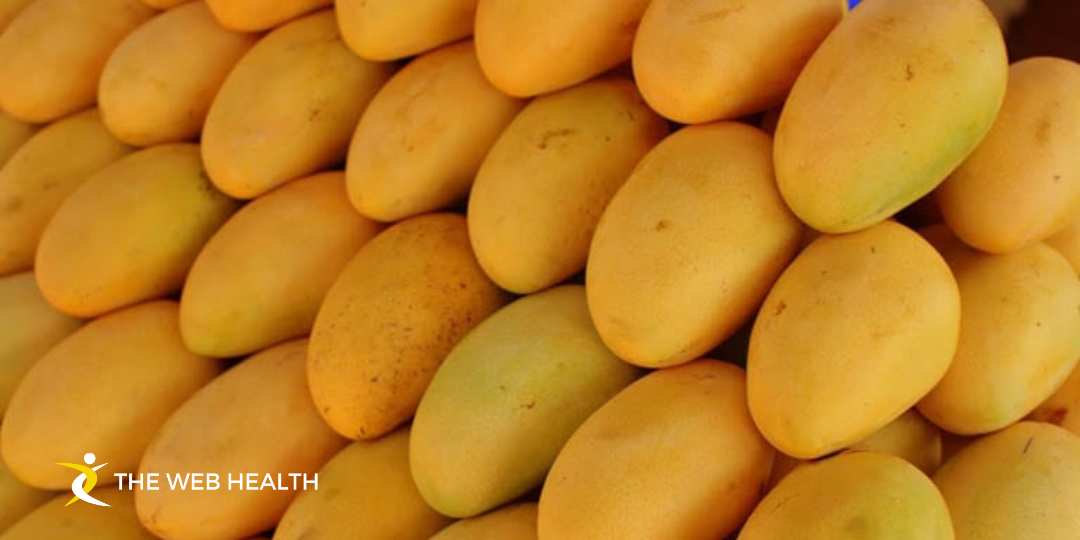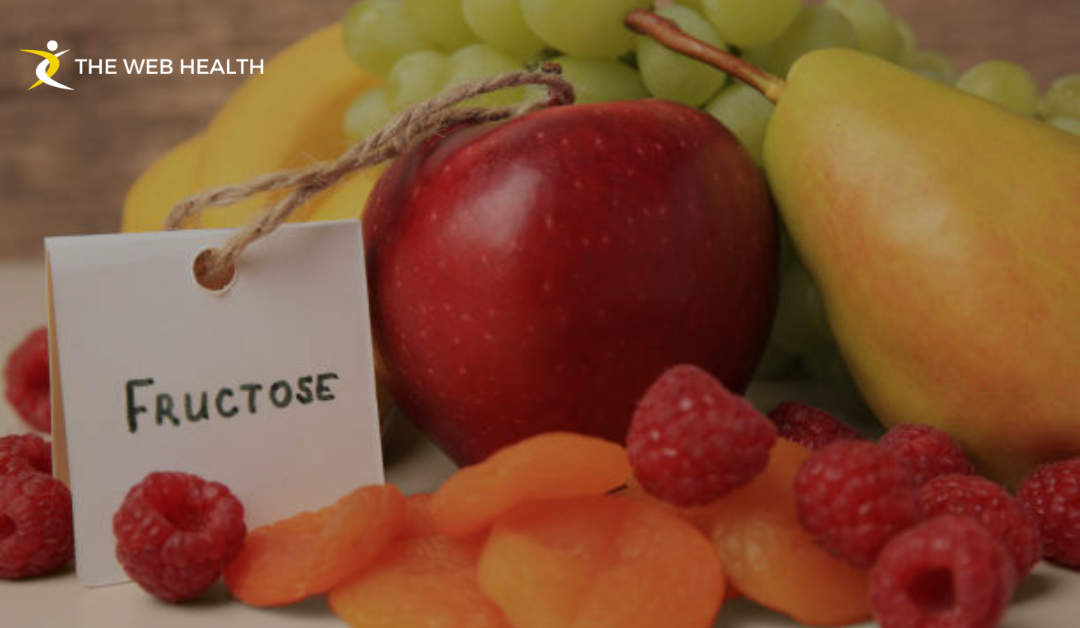Reducing sugar can be hard, especially when it comes to fruit. Many fruits have a lot of fructose, a type of sugar that can upset your digestion, especially if you are sensitive. If you notice bloating or other stomach issues after eating fruit, choosing low-fructose fruits might be the answer for you.
Picking low-fructose fruits is an easy way for you to enjoy the benefits of fruit without discomfort. Whether you want to manage your blood sugar or ease stomach problems, this guide will help you find the best low-fructose fruits and show you how to add them to your diet to stay healthy and feel better.
Fructose is a natural sugar found in fruits, vegetables, and honey. You will also find it in many processed foods and drinks, where it is used as a sweetener. Unlike glucose, which goes directly into your bloodstream, fructose is broken down by your liver. If you eat too much fructose, your liver can turn it into fat. This may lead to health problems like weight gain, fatty liver disease, and a higher risk of diabetes.
Five Foods High in Fructose: Appreciating the Effects
Many common foods contain fructose. While fruits are the most well-known source, some everyday foods you eat might surprise you. It is important to know that fructose is found in a variety of foods beyond just fruit. Here are five common foods that contain fructose and that you might be eating regularly without realizing it.
1. Sugared Drinks
Fruit juices, energy drinks, and soft drinks are high in fructose, often from high-fructose corn syrup. This added sugar can worsen health problems like insulin resistance and weight gain.
2. Processed Snacks
Fructose is used to sweeten items such as cookies, cakes, and packaged sweets. These less nutritious selections are high in sugar and lack nutrients.
3. Condensed Sauces
Added sugars with fructose are common in ketchup, barbecue sauce, and salad dressings. Though the amounts seem small, they can add up over time.
4. Canned and Dried Fruits
Added sugars in fruits like syrup, dried fruits, and canned fruit often increase their fructose levels. Although fruit is nutritious in its natural state, processed forms may contain extra sugars that are not beneficial.
5. Breakfast Cereal
Many breakfast cereals sweetened with fructose can cause your blood sugar to rise. It is important to check the labels, even for cereals that seem healthy, because they may contain hidden sugars.
Fruits High in Fructose You Should Limit

Many fruits contain fructose, a natural sugar that can cause issues for people with fructose malabsorption. While most fruits offer important nutrients, some have higher sugar levels, and eating them may lead to digestive problems. If you want to manage your fructose intake, watch out for fruits high in this sugar. High-fructose fruits include:
- Mangos
- Cherries
- Figs
- Pears
- Watermelon
- Apples
- Asian pears
Because of how your body processes fructose, these fruits, though tasty and nutritious, may cause bloating, gas, and stomach cramps. If you feel discomfort after eating them, you may want to limit or avoid these fruits to help your digestion. This happens because your body can’t absorb fructose properly, which causes fermentation in the gut and leads to symptoms like gas or diarrhea.
Fruits that are Low in Fructose: Healthy Substitutes

Not all fruits are high in fructose. Fortunately, many low-fructose options have a sweet taste but don’t upset your stomach.
Low-fructose fruits to enjoy:
- Avocados
- Blackberries
- Strawberries
- Kiwis
- Papayas
- Lemons and limes
- Oranges
Besides being lower in sugar, these fruits offer many health benefits. For example, berries are rich in antioxidants, and avocados have healthy fats. Adding these fruits to your meals can support your digestion and give you a great mix of flavors without discomfort.
Serving Size Recommendations and How to Incorporate Low-Fructose Fruits Into Your Diet
Here are some simple ways to add low-fructose fruits to your diet:
- Mash avocados on whole-grain bread or add them to salads.
- Snack on blackberries and strawberries or mix them into yogurt or smoothies.
- Add kiwis and papayas to fruit salads for a tropical taste.
- Squeeze limes and lemons into water for a refreshing drink or use as a garnish.
- Eat oranges whole or slice them into salads.
These fruits are easy to include in your meals to boost flavor and nutrition while avoiding high-fructose discomfort.
Foods Low in Fructose Other Than Fruit: What Else Might You Eat?
A balanced diet includes many other foods that are naturally low in fructose; fruit is not the only source of nutrients.
Vegetables are excellent alternatives. Leafy greens like spinach, kale, and lettuce, along with carrots, cucumbers, and bell peppers, are good choices.
Foods low in fructose but high in important fiber and nutrients include quinoa, brown rice, and oats.
For people sensitive to fructose, almond milk and lactose-free dairy products work well as substitutes for regular dairy.
Snacks can be rice cakes with almond butter, carrot sticks with hummus, or a handful of mixed nuts. These low-fructose foods will help you control your fructose intake while keeping a balanced, healthy diet.
Foods Without High Fructose Corn Syrup: Important Considerations
Many processed foods contain the common sweetener high fructose corn syrup (HFCS). It is found in packaged snacks, condiments, and soft drinks. Eating too much HFCS can lead to health problems like weight gain, diabetes, and liver damage. Even though it makes food taste sweeter and more appealing, cutting down on HFCS can help reduce these health risks.
Typical Products Using HFCS:
- Sweetened drinks and soft drinks
- Candies and packaged snacks
- Condiments and salad dressings, including ketchup
- Baked goods and sweets
Alternatives for a Healthier Sweetener:
Consider using natural sweeteners like honey, maple syrup, or agave nectar in moderation instead of products high in HFCS. These options are less processed and may provide extra nutrients, such as minerals in maple syrup or antioxidants in honey. Fresh fruits also help satisfy your sweet cravings. They contain natural sugars that your body absorbs more slowly, giving you added health benefits.
Ways to Cut High Fructose from Your Diet
One of the best ways to avoid HFCS is to carefully read food labels. Many processed foods have hidden sources of fructose, even in items that do not taste syrupy. Watch for terms like high fructose corn syrup, corn syrup, and agave syrup, so try to avoid these when possible. Choosing foods with simple ingredients such as fresh fruits, vegetables, and whole grains can help you reduce your HFCS intake.
Tips for Practical Reduction of Fructose Consumption
Cook at Home: Preparing meals at home helps you avoid processed foods and allows you to control exactly what goes into your diet.
Read Labels: Check the ingredient list for HFCS or other added sugars. Products with fewer ingredients are usually better.
Choose Foods First: Focus on fresh fruits, vegetables, and unprocessed meats. These foods naturally do not contain artificial sweeteners like HFCS.
Small changes like planning your meals and choosing foods wisely will help you reduce your fructose intake and keep a healthier, more balanced diet.
How a Low-Fructose Diet Promotes Gastric Health
A low-fructose diet can help people with digestive problems, such as fructose malabsorption or irritable bowel syndrome (IBS), and it can also benefit others. Reducing fructose in your diet may relieve bloating, gas, and stomach discomfort caused by eating high-fructose foods.
1. Reduced Stomach Aches
When fructose is difficult for your body to break down, you may exhibit symptoms including bloating, diarrhea, and stomach pain. Following a low-fructose diet limits foods that cause discomfort, helping to reduce these unpleasant symptoms.
2. Increased Nutrient Absorption
By avoiding foods high in fructose, your body can better absorb important nutrients such as fiber, vitamins, and minerals. Eating a balanced diet with lean proteins, healthy fats, and fiber-rich vegetables is essential for good digestive health.
3. Improved Gut Health
Any diet should include fiber because it helps maintain healthy gut bacteria and supports digestion. Low-fructose fruits, vegetables, and whole grains are great sources of fiber that promote regular bowel movements and good digestive health.
4. Assistance with Weight Management
The liver processes fructose, so eating too much can cause fat to build up around it. Reducing fructose intake helps improve your metabolism and supports healthier weight management.
FAQs About Low Fructose Fruits and Foods
Can I eat bananas on a low-fructose diet?
Yes, bananas are fairly low in fructose and can be eaten in moderation on a low-fructose diet. A medium banana has about 5 grams of sugar, which most people with fructose intolerance can handle.
Are strawberries low in fructose?
Yes, strawberries are low in fructose. One cup of strawberries contains around 7 grams of sugar, mostly in the form of glucose and sucrose. This makes them a suitable choice for a low-fructose diet, especially if you’re sensitive to fructose or managing digestive issues.
What are some common symptoms of fructose intolerance?
Symptoms of fructose intolerance include bloating, gas, stomach pain, diarrhea, and nausea. These happen because your body cannot absorb fructose properly in the small intestine. When fructose stays in your gut, it ferments and produces gas, leading to discomfort. Recognizing these signs early can help you make better food choices and manage symptoms with a low-fructose diet.
Last Words
Following a low-fructose diet can be a smart and helpful choice, especially if you have digestive issues like bloating or stomach pain. By choosing fruits and foods that are low in fructose, you can enjoy better digestion, improve nutrient absorption, and reduce discomfort.
Paying attention to food labels, cooking at home, and picking natural, whole foods can make a big difference in how you feel. A balanced diet with healthy fruits, vegetables, and grains supports both gut health and overall wellness, helping you stay comfortable, active, and in control of your health.


